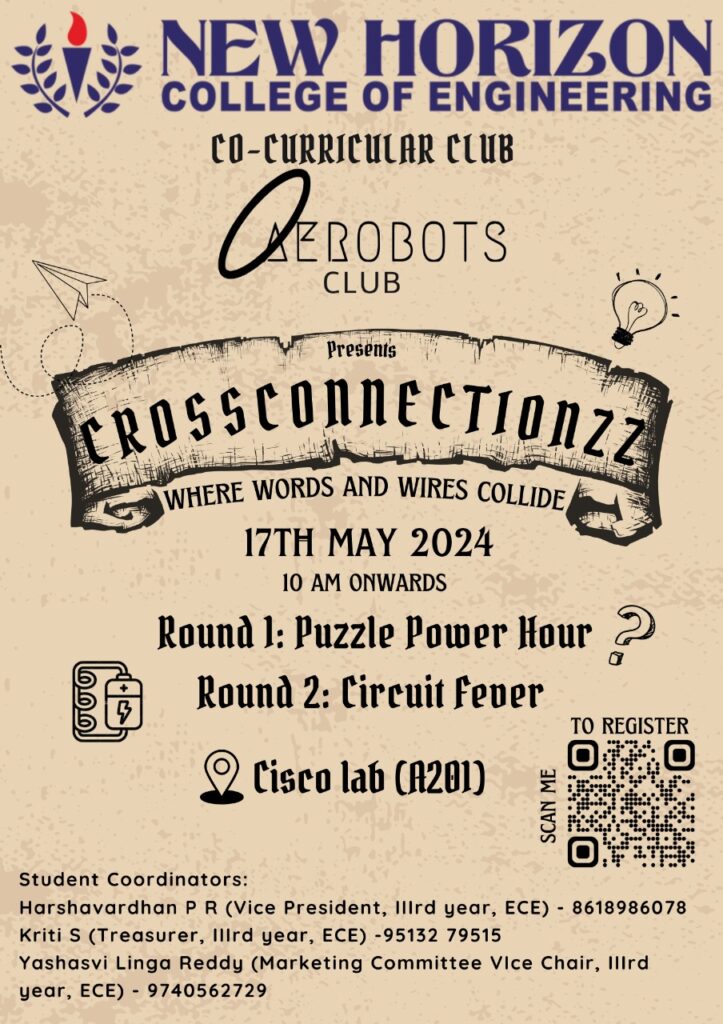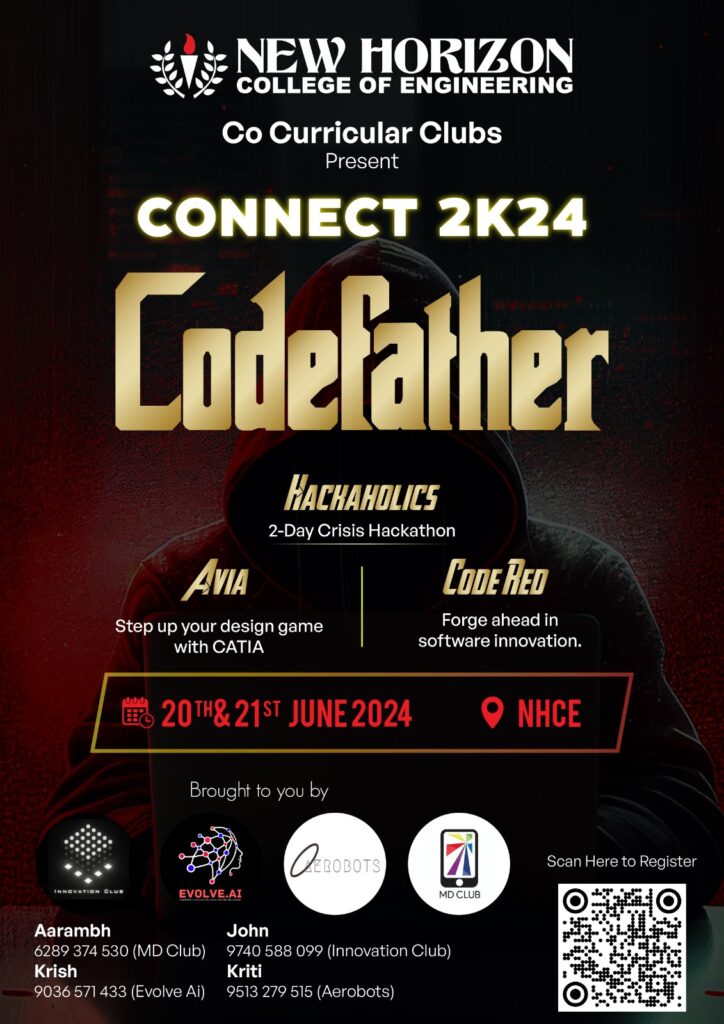
CROSSCONNECTIONZZ
On May 17, 2024, the Aerobots student club hosted an exciting event called “CrossConnectionzz,” which drew enthusiastic participation and positive feedback. The event was structured into three major rounds. The first round challenged participants to solve a crossword puzzle with questions centered on aerial vehicles and electronics, testing their knowledge and quick thinking. In the second round, a buzzer quiz added a competitive edge, as teams raced to press the buzzer and answer questions displayed on a screen, with points awarded to the quickest and most accurate responses.
The final round focused on practical skills, requiring teams to design five different circuits. Points were given based on how quickly and accurately each team completed the task. All the points from these rounds were totaled to determine the winners of the competition. Overall, “CrossConnectionzz” was a huge success, garnering enthusiastic praise from participants who expressed a keen interest in having similar events soon.

AVIA
The CATIA workshop was graced by the expertise of Mr. Nagabhushan from the Mechanical Engineering Department, who served as the resource person for AVIA. The focus of the workshop was on the foundational use of CATIA software. Participants were introduced to the software’s diverse functionalities and leveraged this knowledge to design various 3D objects.
Our CATIA workshop typically focuses on training participants to use CATIA (Computer Aided Three-dimensional Interactive Application), which is a powerful multi-platform CAD/CAM/CAE software suite developed by Dassault Systems. It is widely used in various industries, particularly in aerospace, automotive, and industrial design, for product design and engineering.
1. Introduction to CATIA – History, applications, and key features. User Interface – Familiarization with the workspace, toolbars, and basic navigation.
2. Basic Sketching – Sketcher Workbench: Creating and editing 2D sketches. – Constraints and Dimensions: Applying geometric and dimensional constraints.
3. Part Design – Creating 3D Models: Basic part modeling techniques. – Features: Extrude, revolve, fillet, chamfer, and other fundamental features – Editing Parts: Modifying and refining 3D models.